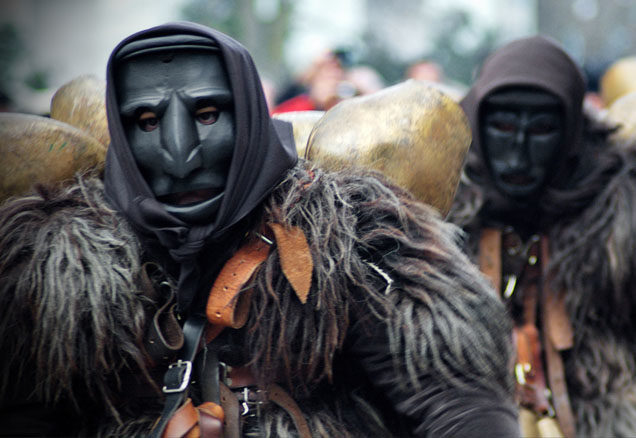We, who love to live in colour, adore the Carnival. It’s without a doubt the craziest and most colourful festival of the year. Jokes, masks, fun and big eat: what’s better?
It’s celebrated throughout Italy and each Region has its own traditions. Venice, Viareggio, Cento, Putignano, Oristano are just some of the traditional carnival festivals considered among the most important in the world, each one with its unique and inimitable rites.
In Sardinia, the Carnival is not only represented by parades with allegorical floats but it’s something ancient, special, different from area to area and full of references to the myth and the agricultural tradition of the island. Su Carrasecare, so it’s called, that translated from the Sardinian means “living flesh to be dismembered“: this term makes good the basic idea of the island carnival, populated by witches and madmen, scary figures, men dressed as women, knights without fear.
In some places of Sardinia is represented in a particularly suggestive way, as in Barbagia (in Mamoiada), where every year takes place the parade of the typical masks of Mammuthones and Issohadores, or that of the Boes and Merdules in Ottana.

In Oristano, instead, we celebrate Sa Sartiglia, an equestrian race that takes place in the historic center of the city with spectacular quadrilles where masked riders, launched at full speed, try to put a suspended star in the race as a wish for a good harvest.
In the north Sardinia is famous the Carnival of Tempio also called Carrasciali Timpiesu, the most important allegorical Carnival of the island and member, as Viareggio, Cento and Fano, of the Italian Federation of Carnivals. A manifestation almost entirely focused on the figure of his Majesty King George, who represents power in all its forms. The event begins with the triumphal entry into the city of King George, who comes for six days praised, honored and adulated. On the last day, on Shrove Tuesday, guilty of representing all the ills of the city, King George is processed and burned on the public square and thus closes the carnival. With the ancient rite of fire, all the troubles that were demolished over the city will be thrown away.

The ancient Ogliastra Carnival, on the other hand, recalls rites linked to ancient propitiatory dances. Maimone takes its name from the ancient Phoenician divinity of the rain (in Sardinian “Maimulu”).
Today the typical masks are found only in Ulassai, even if it only partially preserves the manifestation compared to the past. The main mask is Su Maimulu, consisting of a large skin and several bells on the back. Su Maimulu is followed by the masks Sa Ingrastula, Sa Martinicca, the puppet “su Martisberri“, s’Ursu and a large group of Assogadoris. The event ends on Shrove Tuesday “Martisberri”, with the puppet’s condemnation at the stake.

During the Carnival, food can’t be missed, so as flavors and aromas of the Sardinian tradition. From north to south, this particular time of year is characterized by a wide variety of desserts such as Zippulas, Meraviglias, Trizzas, Parafrittus, Uvusones and many others. We can’t give up to these delicacies so let’s go, let’s give ourselves some sins of gluttony, because they are all delicious, and all of them create the right atmosphere for the party. Sweet atmosphere!

In short, the Carnival in Sardinia is not a party like any other and as the unforgettable Andrea Parodi sang, in one of his song called “Carrasecare“: in carnival time you forget all the daily worries, replaced by fun and company. And the night will be invaded by the wind of spring!
Good Carnival to everyone!


